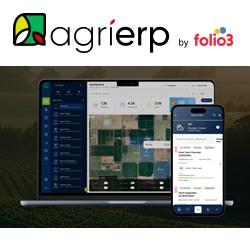How Parvalux Is Helping to Develop the Next Generation of Conveyor Systems
What is the importance of spectrums when growing indoors?
MSU researchers develop low-cost sensors to help farmers irrigate more efficiently, manage diseases
The future of farming - Precision bearings are vital in autonomous agricultural machinery
Guarding Your Grove: Understanding Almond Pest Monitoring
Is Indoor Hydroponics a Good Solution for Agricultural Cooperatives?
Top Benefits of Incorporating Demand Response into your Farm, Winery or Cannabis-Growing Operation
How much are your old lights costing you?
Sakata Ornamentals Enhances Growth with LEDs
Understanding the Significance of Agricultural Insect Management
igutex® bearing range vs bronze bearings
Closing the Skills Gap in AgTech - Hartnell College
'Autonomous Growing makes me sleep better as a head grower'
The Harsh Truth About LED Greenhouse Lighting
What is the best plain bearing for agricultural machinery?
Records 106 to 120 of 896
First | Previous | Next | Last
Featured Product

